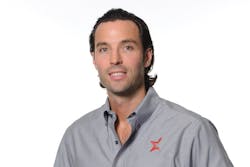CARSTAR Canada president Michael Macaluso leads one of his country’s largest and strongest MSOs. And, he says, the company didn’t gain its footprint by being combative or afraid of change.
Macaluso recently spoke to FenderBender about the biggest obstacles facing the collision repair industry, and how North America’s MSO leaders can face them head on and succeed.
The industry is in a phase of unprecedented change. From vehicle technology to insurance involvement to consumer perceptions, what is the most important thing shops can do today to succeed?
It’s about attitude and the way you view it. It’s really just that simple. We’ve seen a lot of change in our market here [in Canada], and I know there’s been incredible change in every industry, not just here. But change will always be coming, and it doesn’t have to be scary.
Change can be a good thing, and those that are on board with it, those who embrace a changing dynamic, will be the ones who benefit. We see problems rising here or what’s happened elsewhere, and we want to look for solutions. We want a voice at the table—and that’s what you must have to succeed moving forward.
Embrace change. Don’t be afraid to adapt. And make sure your business has a voice at the table for the decisions in the future that will affect you the most.
How does a business get a “voice” in industry-wide change?
Well, let’s use an example. I think it’s fairly easy to see the similarities between what’s happened [in North America] and places like the U.K. Consolidation and [parts] procurement practices are an issue in all these industries—and it’s likely gone too far in the U.K. and repair centers are suffering for it.
With parts procurement, several years ago, we had a very similar situation [in Canada] to what the U.S. recently faced with the State Farm-PartsTrader mandate. Our biggest thing, though, is that we choose collaboration. We believe in collaboration rather than confrontation. We recognized this change was coming, but that we needed to keep the integrity of our programs, the safety of repairs, and credibility of the entire supply chain.
So, in order to have a seat at the table and effect change, you have to be willing to sit at that table. If you stand there and say, ‘We don’t want anything to do with parts procurement,’ then you’re stuck on the sidelines.
Our industry leaders—shops, shop owners, MSOs—we worked closely with the carriers and the [respective] software makers, so that the programs could be more shop friendly. Through the CCIF (Canadian Collision Industry Forum), which is like your CIC in the States (Collision Industry Conference), we had a dialogue and were able find solutions. I’d estimate that about 90 percent of repairers’ suggestions and [requested] changes were implemented.
The systems were coming, [and] we needed to make sure we weren’t going to be facing seven systems from seven carriers, all of which don’t benefit shops. We worked together to find reasonable solutions, and now it’s a non-issue here.
That’s just one example, but that’s the approach we take to ensure we have that voice in these decisions. We can’t be left out.
And this is an approach the U.S. industry can take to the challenges it faces down the road?
Absolutely. There are always going to be challenges, and we have to decide how we’re going to face them, what kind of an industry we want to be.
We need to get the right people at the table and say, “Here’s the issue, and here are the reasons why.” And then we need to figure out what we can do to find a solution.
Because our market [in Canada] is further down the consolidation side than the U.S., we have an advantage in the scale between our major players. We can do this a little more simply. But it can be the same way in the U.S.
We just say, “Hey, is there a way we can look at this differently?” And instead of fighint over the same problem for seven years, let’s talk about it for seven minutes, then spend the next seven years building those solutions that benefit all of us.
Collision repair is changing rapidly; there is a lot of change going on in the industry. It’s up to everyone how they approach it. Are these challenges and problems? Or is this an opportunity to improve and make yourself better? How are you going to look at it?
About the Author

Bryce Evans
Bryce Evans is the former vice president of content at 10 Missions Media, overseeing an award-winning team that produces FenderBender, Ratchet+Wrench and NOLN.
